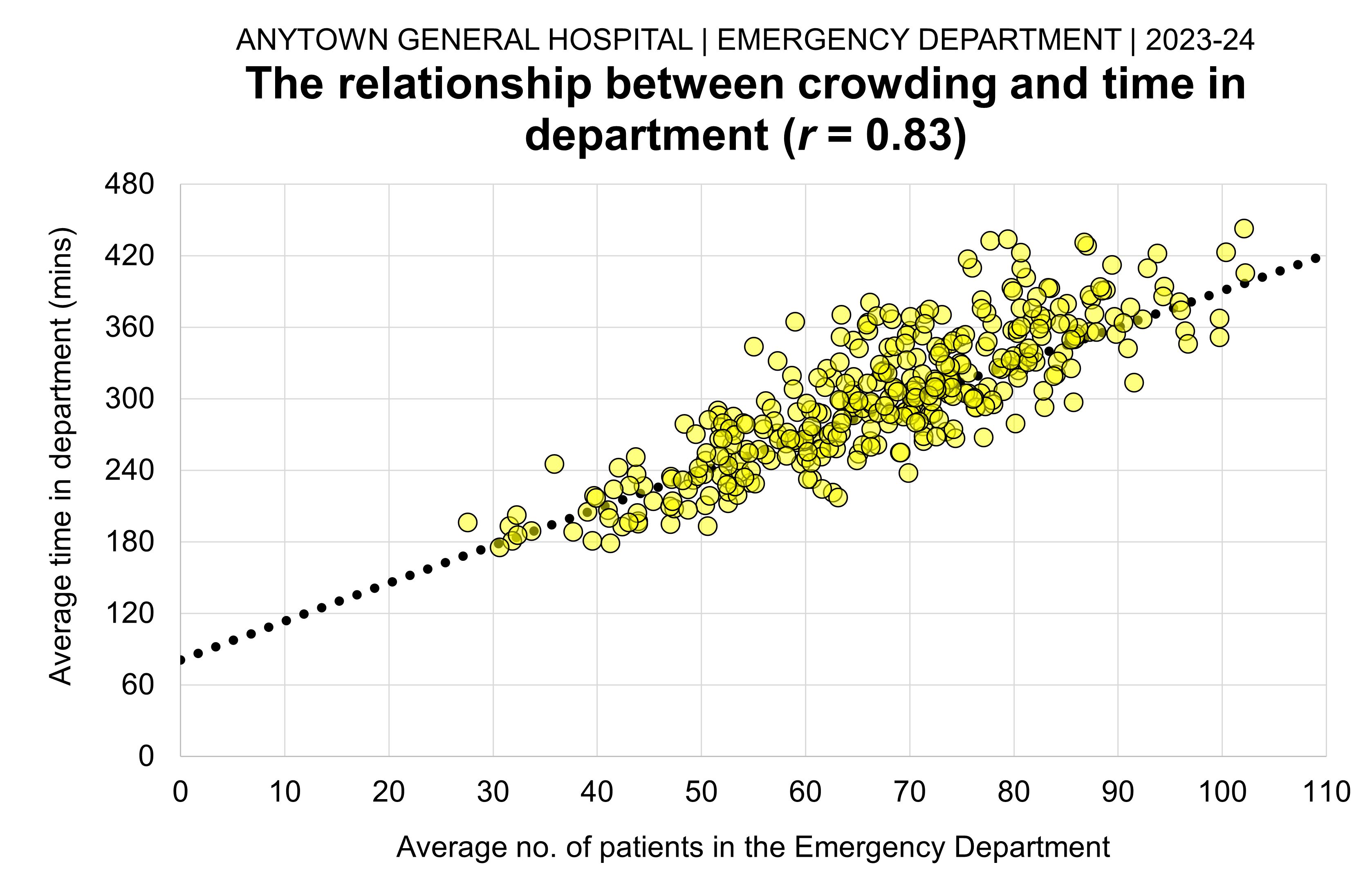
Is it the crowding that causes the length of stay? Or is it the length of stay that causes the crowding? When I ask clinicians this question, they usually say it's the crowding that causes long lengths of stay. But when I ask data analysts, they often say it's the long lengths of stay that cause the crowding.
And if I were to ask George Lakoff, he'd call it a feedback loop!

Does it matter which way the cause-and-effect mechanism works? Well, it does if you want to know which variable to place on the horizontal axis. According to the textbooks, the horizontal axis variable is supposed to be the independent variable: the thing that's doing the causing. Whereas the vertical axis is for the dependent variable: the thing that's getting caused.
But I'm pretty sure the causation works both ways. If we have a period when most of the arrivals are of patients who can be treated quickly (short lengths of stay), then these short lengths of stay will have the effect of enabling the ED to be less full. In this case, it's the length of stay that's causing the fullness.
But it's also possible that if patients arrive when the department is already full, then that fullness—or crowding—will lengthen the stays of patients in the ED. This is the cause-and-effect mechanism working the opposite way.
[11 October 2024]